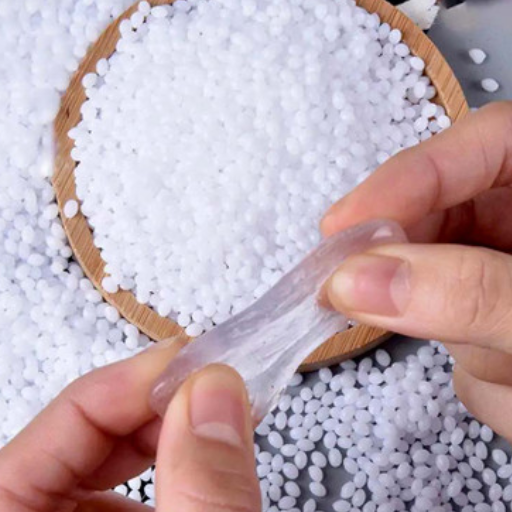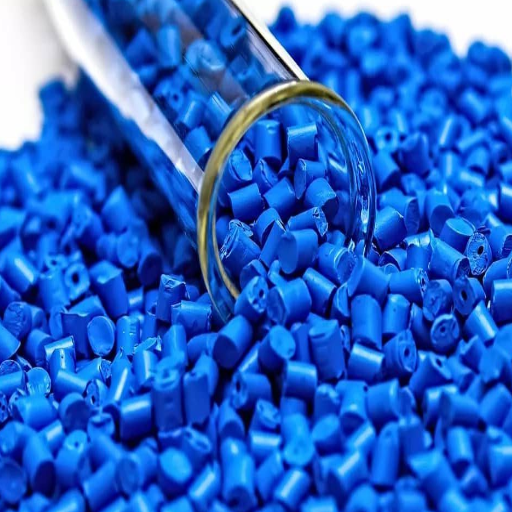It is general knowledge that plastic is widely used in manufacturing food storage containers, specifically polypropylene. Even though it’s categorized as plastic, concerns remain about its safety when contacting food items. This article analyzes if polypropylene plastic’s properties meet the required food safety standard. We will seek to understand the composition of the material, its resistance to heat and moisture, and its strength to avoid food contamination during storage. Moreover, the article will look into regulatory instructions, existing certifications, and the usual application so that the reader gets an extensive view of whether or not polypropylene is appropriate for food storage solutions. This will enable the readers to decide if using polypropylene as a food storage container is viable at home and in large-scale businesses.
What is 5 PP plastic, and why is it used for food storage?

Polypropylene, often recognized with the resin identification code “5 PP”, finds extensive application in the food-grade container manufacturing industry because of its thermoplastic polymer properties. Its widespread use, lightweight, and heat detection properties make it an ideal choice as it is inert and durable. Another attribute that allows the use of polypropylene for containers is its temperature control range, as it can withstand various temperature conversions like freezing and microwaving without damage. The drawbacks of polypropylene containers are very few as they tend to be biocompatible, possess no toxicity, and, even more interestingly, do not leach any harmful chemicals when occupied with food items. Food-grade regulators like the FDA and EU have already certified them as temperature-containing materials, and their advantages make them one of the most efficient food-preserving items out there.
Understanding polypropylene (PP) and its properties
Polypropylene (PP) is a multipurpose thermoplastic polymer used in several industries owing to its unique attributes. One of its key attributes is a high degree of chemical resistance, which protects it from corrosive attacks from an array of acids, bases, and several chemical solvents. Hence, it is well suited for packaging, storage, and laboratories.
In addition, PP has remarkable mechanical properties, such as relatively high tensile strength and impact strength, which make it withstand substantial amounts of mechanical stress. Also, being of low density helps design lightweight structures, which is beneficial in the automotive and consumer goods sectors. Polypropylene can withstand temperature fluctuations of up to 100 degrees Centigrade (212 degrees Fahrenheit) and does not distort, allowing it to be used in microwaveable or freezer-safe containers.
Polypropylene is odorless and almost tasteless and is approved for product use by the FDA, EU, and other global agencies for food safety reasons. Since it is a non-leaching polymer, it does not contaminate food composites and liquids when stored or heated during cooking. Moreover, the recyclability aspect of PP enhances its suitability in line with eco-friendly manufacturing practices and modern practices while designing the products. These combined features make polypropylene vital for medical devices and food packaging products.
The significance of the number 5 in plastic classification
Plastic classification code 5 comprises polypropylene (PP), a common thermoplastic polymer. Polypropylene is valued for its strength, lightweight, chemical, and heat resistance properties; therefore, it can be used in various applications such as food containers, medical devices, and automotive components. Furthermore, its recycling feasibility, determined by the resin identification code of 5-can, strengthens its importance in green manufacturing practices.
Common uses of PP plastic in food packaging
The food industry is among those that use Polypropylene (PP) plastic, and this is because of its micelle-forming characteristics. It is a common ingredient in microwaving containers since it can resist high temperatures without distorting or leaching substances. In addition, due to its cost-effective nature and cheaper fuel retarding properties, PP plastic finds use in the production of yogurt cups, modified atmosphere bottle caps, and even re-sealable containers. Also, its great strength and gloss make it ideal for clear packaging, which allows consumers to view the contents easily. It is also safe for consumption and easy to recycle, making it acceptable in the food sector in terms of health and environmental compliance.
How safe is 5 PP plastic for food storage, and why?
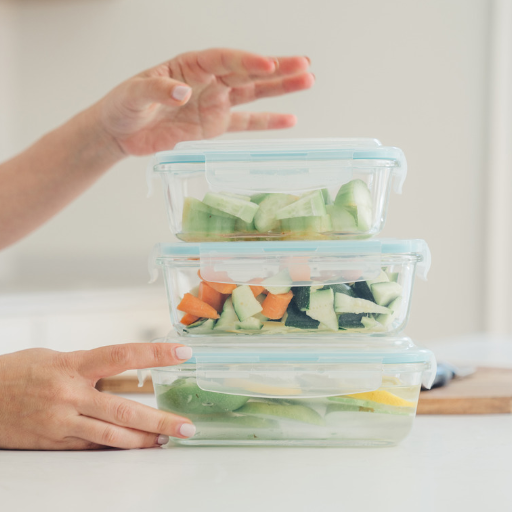
Polypropylene (5 PP) is a type of plastic regarded as safe for food contact surfaces owing to its high heat resistance and chemical stability that is non-toxic. Under ordinary conditions such as microwave heating, exposure to freezing temperatures, or any related usage, the plastic does not dissolve or corrode to release harmful toxic substances into edibles or beverages. Furthermore, the porous nature of exposed sealed packages significantly reduces moisture and gas transfer,r thereby preserving the contents. Owing to its food-safe approval by the FDA, 5 PP plastic meets very high requirements, putting it in a credible position for containers used for food items.
Chemical composition and food-grade standards
Polypropylene (PP) is a thermoplastic polymer created through the polymerization of propylene monomers. It predominantly comprises hydrogen and carbon atoms, yielding a non-polar semi-crystalline structure. This composition enhances its excellent thermal and chemical stability. Food-grade polypropylene is produced to meet the requirements of many authorities, such as the FDA and EFSA. These guidelines also prevent contamination and exposure to heavy metals and other deleterious substances, making them safe for food use. Moreover, food-grade pp is also evaluated for the migration limit so that as little as possible passes from the polymer to the food under certain temperatures and usage levels. This adherence to global standards on food safety makes PP widely accepted for use in making food storage containers and drinkable beverage pouches.
Resistance to heat and chemicals in food
One of the best polymers with a wide range of applications in the food industry is undoubtedly Polypropylene (PP). It does not deform over a working temperature of 120 Degrees Celsius and works well in microwaves and dishwashers. It also possesses a robust chemical resistance to oil, acids, and alcohols found in food items, thus enabling a longer service life for effective food packaging and storage containers. Due to such a combination of properties, PP is the preferred material for food packaging and storage.
Long-term safety for food contact
While present-day scientific investigations target new polymers’ synthesis, characterization, and improved performance, stores are stuffed with polypropylene products. As a result, polypropene comes into prolonged contact with food across almost all homes. Food and Drug Administration (FDA), American Material Factory Association, and European Food Safety Authority regard polypropylene as a safe polymer for food containers, free from interactions with food and toxic additives. In short – it works well. All polypropylene grades, especially 650, 648, 8273, and 6271, are in all meat packing materials in the USA. However, polyacetals can efficiently hydrolyze, and PP is relatively resistant to acid attack, particularly at elevated temperatures. Heat does accelerate the stability of PP. Safety and strict legislation explain why more than 70%of packaging worldwide for food and other applications is made from polypropylene.
Can 5 PP plastic containers be safely used in the microwave?
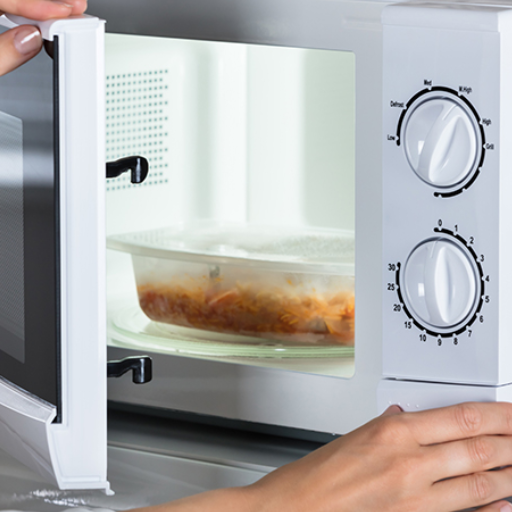
Polypropylene (PP) plastics can be put in the microwave as long as they’re labeled as safe to use in one, but you should not do so to more than 5 of them. This is because Micro polypropylene does not cause overheating, compromising its composition or excretion of toxic elements while retaining stability in temperature. Nevertheless, it is critical to adhere to the manufacturer’s directions and not microwave any damaged or worn-out containers, as it would affect the conditions and safety of those containers.
Heat resistance of polypropylene
Polypropylene’s heat resistance is one of its defining features. It allows for its use in numerous situations, such as in safe containers for microwaves. This thermoplastic copolymer slabs between 130 and 160 degrees depending on its composition. Its semi-crystalline structure ensures that the compound does not distort when exposed to moderate heat of 100 with a tolerance of 212 degrees C. This is because micro polypropylene specifically caters for short usage without allowing for chemical filtering out of the container. However, suppose high temperatures or heat spread over a long period. Any container sections must be inspected for faults or wear to prevent faulty performance or hazards temporarily.
Potential risks of microwaving plastic
You may think twice before putting plastic into the microwave, as the effects could be dire. It is a common misconception that high heat cannot penetrate a microwave-safe label. Plastics, such as BPA and phthalates, can warp and stereotype food. Although some do not distort over time, prolonged exposure could make them melt. Moreover, some pieces of plastic weren’t designed to go in a microwave, and using the wrong material could only lead to more potential harm. But don’t fret too much; using microwave-safe plastic and avoiding cooking food with high-fat content should do the work. Replacing scratched containers is also a good preventive measure.
Best practices for microwave use
Security is paramount in my microwave cooking practice. I also make sure to use only microwave-safe containers, plates, and bowls as designated by the microwave-safe symbol found on the packaging or labels. To avoid chemicals leaching into food, I ensure that plastic wraps or containers that don’t have the “microwave safe” sign are not microwaved. Further, I place a lid or a paper towel over my food to protect it from splatters and simultaneously allow steam to escape. Mix the contents evenly or turn the container halfway through the preparation to heat the food evenly. On the other hand, I looked for rules the manufacturer had written on food packing and never put utensils and foil made out of metal inside the microwave, as they create sparks and can damage the oven.
How does 5 PP plastic compare to other food-grade plastics?
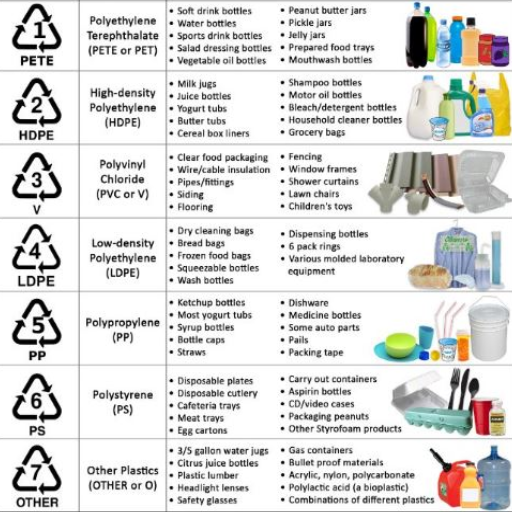
Polypropylene (PP), which bears code 5 on the resin list, is like no other among food-grade plastics since it is highly heat resistant, which enables its use in microwaves and dishwashers. Apart from PP, different types of female-headed non-prevalent composite include PET code 1 or PS code 6. Further, it can withstand considerably high temperatures without the danger of warping brittle- an attribute not shared by plastic. Also, being an economically inactive PP polymer gives a reasonable edge over other plastics because it poses little or no risk of leaching chemicals into foods or drinks. Do note that PP is also lightweight and very strong, but not all regions have a robust recycling system; nevertheless, it has one of the highest recycling rates in the world. Such characteristics make PP a food contact material that is far better and safer than many others.
Comparing PP to PET, HDPE, and other food-safe plastics
Something that makes polypropylene (PP) different from other plastic-type substances is its individualistic makeup, which implies that it’s safe for food. Heating applications range from microwaving to dishwashing with PP. Still, it isn’t the same for polyethylene terephthalate (PET), used primarily for bottle applications or containers to withstand cold weather since it provides good clarity and is an impeccable barrier. That isn’t the case with PP. However, PP does reasonably well against PET in engineering as PP has substantially fewer structurally reinforced elements, and the degrading metric is also lower.
HDPE, or high-density polyethylene, is also one of the most widely used food-safe materials, which in some sense is also similar to PP in that it is also chemically resistant and exceptionally durable. Nonetheless, it can be argued that HDPE is dense and has greater strength than PP, making it more utilitarian for fabricating rigid containers and bulk storage. At the same time, the latter is more advantageous for thin-walled applications such as food packaging, where added weight is an issue and flexibility is needed. The only drawback is that PP has a significantly lower melting point than HDPE, making it less suitable for high-temperature applications.
Low-density polyethylene (LDPE) and polystyrene (PS) are other food-grade plastics that can be employed, but they lack versatility and some safety aspects in most circumstances. LDPE is manufactured for use in films owing to its ease of use, but it does not possess the thermosetting properties that PP does. Furthermore, polystyrene is brittle and may leach other chemicals in certain circumstances, making it less appealing, and food-grade polypropylene is a more effective long-term food-storing solution. When needed, these comparative advantages clarify why PP offers a good, sound choice in food-grade applications.
Advantages and disadvantages of PP for food storage
Polypropylene (PP) possesses several advantages for food storage. PP is highly resistant to heat, so it can be used in microwaves or dishwashers without degrading. Its strength and impact resistance diminishes the chances of cracks or breaks, providing longevity. Moreover, PP is proven safe, as it is non-toxic and rarely releases any chemicals into the food, ensuring food safety.
On the other hand, some drawbacks sometimes outweigh the advantages. PP has limitations in providing sufficient oxygen and moisture barrier as P.E.T., which can affect some food items’ shelf-life. It is rigid; however, this rigidity helps provide structure but might not be suitable for food items that require flexible storage. Lastly, while it can be recycled, it is regional, which can reduce its carbon footprint.
Understanding the plastic safety number chart
The chart accompanying the safety number on the plastic provides a scheme for classifying plastic materials and their properties, most importantly, their potential for recyclability. Each plastic is marked with a number from 1 to 7, usually surrounded by a symbol showing the three recycling arrows. Those numbers are significant in assessing the hazard level and a specific item’s effect on the environment. For example, plastics falling under “1” (PET) can be relied on to be recycled since they are commonly used in beverage containers and bottles, while “5” (PP) can be used for food. Still, their recycling ability may depend on the location. There also are numbers “3” (PVC) or “7” (other), which are not often recycled and have a high likelihood of releasing toxic chemicals, so they are a threat to health. Understanding these definitions assists in promoting a proper approach to the usage, disposal, and recycling of plastic materials.
What are the alternatives to 5 PP plastic for food storage?
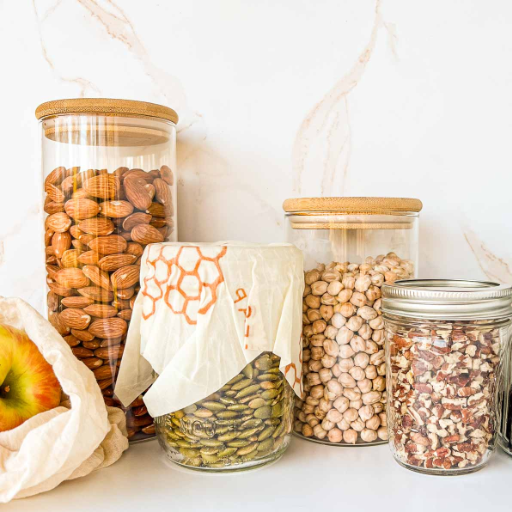
Aside from 5 PP, there are other materials that one can use in food storage, such as bioplastics, glass, stainless steel, and silicone. Being a non-toxic substance with no high susceptibility to chemicals and fully recyclable, glass is environmentally friendly. Stainless steel is also considered durable, easy to use, and corrosion-resistant. It can store and transport food, making it more manageable. Being wholly safe and lightweight, food-grade silicone is ideal for use in different temperatures as it contains no harmful substances. Moreover, PLA bioplastic bioplastics are considered better, and their only downside is that they rely on certain composting conditions to be biodegradable. Each of such alternatives has certain disadvantages, therefore consumers can choose based on durability, the environmental damage that can be caused and other functional aspects.
Glass and stainless steel options
When using glass or stainless-steel containers for storage or even as a package replacement, an individual can use any one of the materials as a container since, in one way or another, they all have their benefits. Glass women’s most incredible natural resource – sand is the main component in glass, making it non-porous material which means it will never take on odors, flavors or any chemicals it contains. It is easy to recycle and resistant to high temperatures for food preparation and storage. However, glass can be heavy and break easily, which determines its reliability when transporting food items within it.
Conversely, stainless steel is a strong metal made of iron, chromium, and other alloys. It is not easily affected by rust, corrosion, or staining; hence, it can be used long for kitchen and industrial items. Compared to glass, food-grade stainless steel is very light and can not break, which makes it more suitable when portability is needed. All these two types of material have been proven to be safe for repeated applications and can assist with decreasing the consumption of single-use plastic; however, due to the high cost incurred in processing the alloys, the recycling potential of steel is lower than that of glass. However, choosing between such materials concerns particular use cases and personal preferences such as weight, durability, and eco-friendly options.
Biodegradable and eco-friendly alternatives
Paper, bamboo, and plant-based plastics such as PLA are biodegradable and environmentally friendly materials. Such materials can break down naturally and not leave dangerous traces within the ecosystem, thus assisting in curbing pollution. For instance, PLA, usually used for serving containers and utensils, is made from renewable corn. Similarly, bamboo is a quick-growing, sustainable option for straws and cutlery. Other materials, often enhanced for virility, such as paper-based alternatives, are also becoming more commonplace in the packing industry. Although these options are, in most cases, renewable, their strength and the energy needed to make them are their drawbacks. Considering practicality and sustainability as the most appropriate option is still essential.
Weighing the pros and cons of different materials
A particular material must be selected based on its use, environmental impact, and manufacturing requirements. Bioplastics such as PLA are advantageous because they can be grown quickly and compostable under industrial conditions. However, its manufacturing requires considerable energy, and the biodegradation process may not occur entirely in the natural ecosystem. Bamboo as biomass is eco-friendly as it is strong, fast-growing, and easily bio-degraded. Still, farming and harvesting bamboo may put pressure on the eco-environment. Paper is easy to use because it is easily recyclable and bio-degradable, but it is not very lasting and consumes lots of energy when produced. Overall, no material is a one-stop solution, and trade-offs will always be there; therefore, sustainability considerations on a time scale and use case will be pertinent.
How can 5 PP plastic food containers be adequately cared for and maintained?
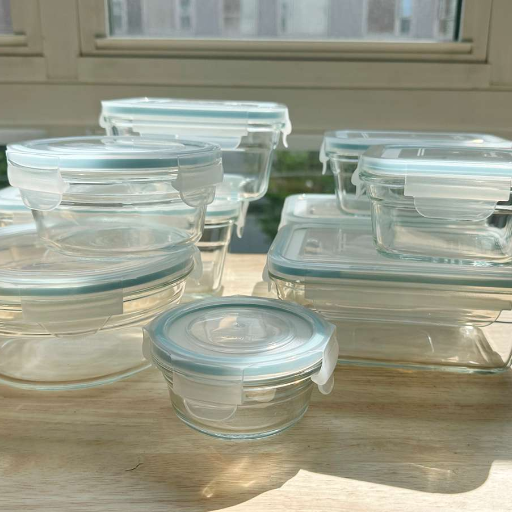
Regarding practicing the safe use of the five PP plastic food containers while cleaning and maintaining them, I will do a few essential things to ensure they are strong and secure. First, I always hand wash them with warm water and mild soap detergent to avoid warping, even though most are dishwasher-safe on the top rack. Then, I try not to use them for food or drinks that are excessively hot to reduce the chances of any degradation or even staining. In terms of storing them, I try to place them in a cool, dry area, avoiding putting them under intense sunlight because it tends to damage the plastic in the long run. Moreover, I also have the habit of searching for the faintest signs of scratches, discoloring, or cracks on the containers and replacing the damaged ones immediately so they aren’t used for food anymore.
Cleaning and sanitizing techniques
To adequately clean and disinfect five PP plastic food containers, start by rinsing them as soon as possible to stop any food remnants from sticking. Use warm water with a non-abrasive washing liquid to eliminate grease and dirt. For low-level disinfection, soak the containers in 1 tablespoon of unscented chlorine bleach per gallon of water for at least two minutes and rinse them well with water. For high-level disinfection, vinegar makes the containers sit in vinegar for 15-20 minutes before cleaning the containers. Even though some 5 PP containers are intended for use in the top rack of the dishwasher, they should not be left in the top rack of a dishwasher for an extended period as they may be exposed to heat in the process. To avoid bacterial or mold growth, the containers should be wiped dry before storing them.
Storing and handling to prevent contamination
To ensure that storage and handling are done precisely to avoid further contamination, I first dry 5 PP plastic food containers thoroughly so that I can seal them. This is done so bacteria or mold do not facilitate within the container. Moreover, I store the containers away from direct sunlight or accessive heat, which, over time, has been known to deteriorate the container. During any handling, it is imperative to touch the containers only with clean hands or utensils to ensure no bacteria transfer. However, great care is taken to avoid selling food containers that invite unwanted contamination or chemicals that could cause unwanted exposure.
Signs of wear and when to replace PP containers
Whenever I put away my PP food containers, I always make it a point to check for unwanted wear, such as cracks, warping, and discoloration. If left unchecked, these features can cause a potential risk of food contamination. It’s essential to requisition PP containers so that all of them stay scratch-free. Harshly scratched containers remain in the cupboard exposed to bacteria, and to avoid contamination, these washed containers are further placed inside clean cupboards. During the handling of containers, it is equally important to check if they had been cleaned thoroughly or had been previously exposed to high amounts of foc heat, high temperatures, or heavy chemicals. The only container not cleaned was left unattended; once it shows exams of damage, it will be tossed out to place food at a sealed storage point. Hygiene is the primary concern, and hence, it is critical to keep monitoring and replacing containers regularly.
References
Frequently Asked Questions (FAQ)
Q: Is polypropylene considered a food-grade plastic safe for food storage?
A: Yes, polypropylene is considered a food-grade plastic and is generally safe for food storage. It is classified as a type 5 plastic. Due to its safety, durability, and resistance to heat and chemicals, it is widely used in the food industry for containers, bottles, and packaging.
Q: What makes polypropylene a food-safe plastic for storage containers?
A: Polypropylene is considered food safe because it does not leach harmful chemicals into food, even when in direct contact with food or beverages. It is also resistant to high temperatures, making it suitable for microwaves and dishwashers. These properties make it one of the safest plastics for food storage containers.
Q: How does polypropylene compare to other types of food-grade plastics?
A: Polypropylene (PP) is one of the safest plastics for food storage, along with High-Density Polyethylene (HDPE) and Polyethylene Terephthalate (PET). PP does not contain harmful chemicals like BPA or phthalates, unlike other plastics. It’s also more heat-resistant than other food-grade plastics, making it versatile for various food storage applications.
Q: Are polypropylene plastic bottles safe for long-term food storage?
A: Yes, polypropylene plastic bottles are safe for long-term food storage. They are durable, resistant to cracking and leaching, and maintain their integrity over time. However, it’s always best to follow the manufacturer’s guidelines and replace containers if they show signs of wear or damage.
Q: Can polypropylene containers be safely used in microwaves and dishwashers?
A: Yes, polypropylene containers are generally safe for microwaves and dishwashers. Their high heat resistance makes them suitable for reheating food in microwaves and cleaning dishwashers without warping or melting. However, always check the specific product labels for manufacturer recommendations.
Q: How can I identify if a plastic container is made of food-grade polypropylene?
A: Food-grade polypropylene containers are usually marked with the recycling symbol containing the number 5 or the letters PP. This indicates that the plastic is polypropylene and safe for food storage. Always look for these markings or explicit “food safe” labels when choosing containers for food storage.
Q: Are there any alternatives to polypropylene for food-safe storage?
A: Yes, there are several alternatives to polypropylene for food-safe storage, such as glass containers, which are a popular choice because they’re inert and don’t leach chemicals. Stainless steel is another durable and safe option. Other food-grade plastics like HDPE (number 2) and PET (number 1) are also considered safe for food storage. Each material has its advantages and may be preferred for different uses.
Q: Does the Food and Drug Administration (FDA) approve polypropylene for food contact?
A: The Food and Drug Administration (FDA) has approved polypropylene for food contact. It meets the FDA’s safety standards for materials that come into direct contact with food and beverages. This approval and its physical properties make polypropylene a widely used plastic in the food industry for various food storage and packaging applications.


